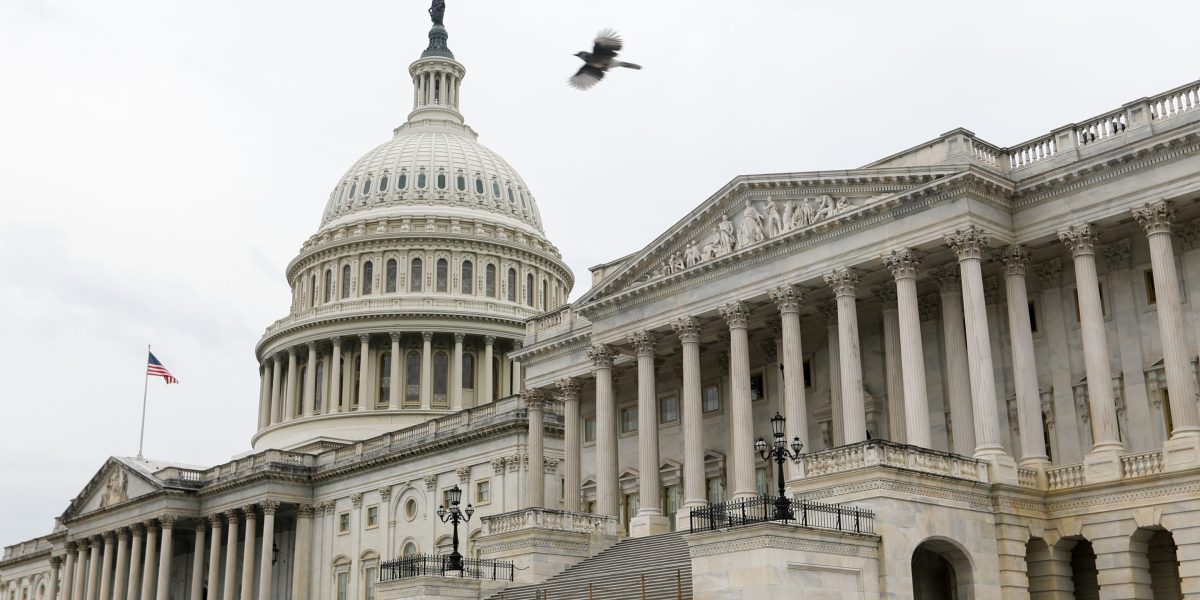A potential government shutdown threatens to delay the release of the September jobs report, a crucial economic indicator scheduled for Friday. Produced by the Bureau of Labor Statistics (BLS), this data is vital for investors and Federal Reserve policymakers as they assess the need for further interest rate reductions. While essential operations like military functions would continue, a prolonged closure would halt all data collection and public releases from the BLS, according to a Labor Department contingency plan obtained by Bloomberg.
The employment report comes at a pivotal moment, following the Fed’s recent decision to resume rate cuts amid signs of a weakening labor market. However, persistent inflation has created uncertainty about the central bank’s next steps. The Fed’s dual mandate—balancing employment and price stability—makes timely labor data essential for informed decisions.
Wall Street anticipates additional rate cuts, and former President Donald Trump has publicly urged more aggressive easing. Yet the path forward depends heavily on whether labor market conditions warrant prioritizing employment support over inflation control.
Recent economic indicators have shown mixed signals. Payroll growth and housing activity have slowed, but GDP has exceeded expectations due to resilient consumer spending, despite inflationary pressures from tariffs. Analysts remain divided on whether weak job gains reflect constrained labor supply due to immigration policies or reduced demand caused by business uncertainty.
Economists forecast a modest improvement in hiring, with an expected 45,000 new jobs added in September, up from 22,000 the previous month, while the unemployment rate is projected to remain unchanged at 4.3%.
Other key reports are still on schedule before the shutdown deadline. The Job Openings and Labor Turnover Survey (JOLTS) is set for Tuesday, and weekly unemployment claims will be released Thursday. Private-sector data will remain unaffected: ADP’s payroll report is due Wednesday, and the Institute for Supply Management will release manufacturing and services indices midweek.
If the shutdown extends beyond the first week, additional reports—including the September Consumer Price Index on October 15—would also be postponed. A longer closure could deprive Fed officials of critical data ahead of their October 28–29 meeting.
Bank of America analysts noted that past shutdowns had limited economic impact, but warned that an extended closure—especially if federal workers face layoffs instead of furloughs—could have longer-lasting consequences. “While a brief shutdown may not have much of an economic effect, it would delay key economic data ahead of the Fed’s next meeting,” BofA stated.
— news from Fortune
— News Original —
A government shutdown would delay the jobs report at a critical time as the Fed weighs more rate cuts amid mixed economic signals
Critical functions like the military will continue, but a shutdown that lasts longer than a few days would affect the monthly jobs report, which is due on Friday and is produced by the Bureau of Labor Statistics. n nA Labor Department contingency plan obtained by Bloomberg shows all data collections and scheduled releases would cease. BLS didn’t immediately respond to a request for comment. n nUp-to-date employment data has become extra crucial to investors and the Federal Reserve, especially after policymakers resumed rate cuts earlier this month on signs that the labor market is weakening. n nBut the continued stickiness of inflation has cast some doubt on how aggressively or cautiously the central bank goes from here. n nFuture rate cuts—which Wall Street is expecting and President Donald Trump is demanding—will hinge on whether the job market merits more attention from the Fed than the inflation side of its dual mandate. n nThe path of Fed rate cuts has been further complicated by a growing disconnect in recent economic data. While payroll growth and the housing market have slowed to a crawl, GDP has come in stronger than expected as consumer spending remains robust, even while Trump’s tariffs raise prices. n nAt the same time, Wall Street remains divided on whether the muted job gains are a function of weak labor supply and Trump’s immigration crackdown or weak demand as businesses grapple with tariff uncertainty. n nJobs report forecast n nEconomists see an uptick in hiring, though still at a subdued level. The September jobs report is expected to show a payroll gain of 45,000, up from 22,000 in the prior month, with the unemployment rate holding steady at 4.3%. n nOther key data sets are supposed to come this week. The job openings and labor turnover report is due Tuesday, right before the shutdown deadline. But weekly unemployment claims are due Thursday. n nHowever, non-government data would be unaffected by a shutdown. ADP’s private-sector payroll report comes out Wednesday, while the Institute for Supply Management publishes its manufacturing activity index on Wednesday and its service sector index on Friday. n nIf a shutdown drags on longer than the first week, additional reports that are closely followed would be on hold too, including the September consumer price index set for Oct. 15. n nAnd in the event a shutdown continues further, then Fed rate setters wouldn’t have access to some of their most important economic indicators when they meet again Oct. 28-29. n nOn Friday, analysts at Bank of American said the economic effects of government shutdowns are typically modest and short-lived. n nBut an extended shutdown and the Trump administration’s threat to lay off federal workers rather than furlough them mean it could have more lasting effects, they warned. n n“If we enter a shutdown, we think it would be brief,” BofA added. “While a brief shutdown may not have much of an economic effect, it would delay key economic data ahead of the Fed’s next meeting.”
